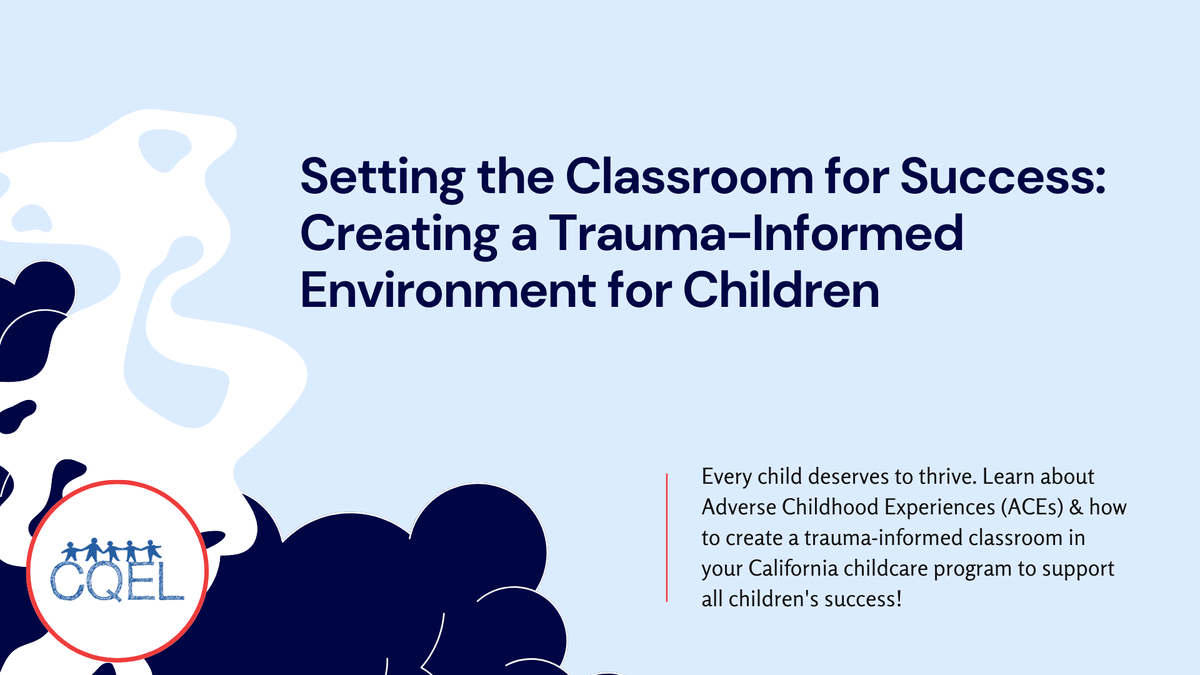Setting the Classroom for Success: Creating a Trauma-Informed Environment for Children
Every child deserves to thrive. Learn about Adverse Childhood Experiences (ACEs) & how to create a trauma-informed classroom in your California childcare program to support all children's success!

Every child deserves the opportunity to thrive in a safe and nurturing environment. Unfortunately, many children experience trauma, which can have a profound impact on their learning and behavior. Adverse Childhood Experiences (ACEs), such as physical or emotional abuse, neglect, or witnessing domestic violence, can disrupt a child's brain development, affecting their ability to regulate emotions, form healthy relationships, and focus in school. As an aspiring childcare provider in California, understanding trauma and creating a trauma-informed classroom is essential for setting all children up for success.
Trauma can encompass a wide range of experiences, including physical abuse, emotional neglect, or witnessing violence. These experiences can disrupt the development of the prefrontal cortex, the part of the brain responsible for emotional regulation, impulse control, and decision-making. This can manifest in a variety of ways in the classroom, such as difficulty managing strong emotions, outbursts of frustration, or problems with social interaction. Understanding the impact of trauma allows you to approach these behaviors with compassion and support, rather than judgment.
A trauma-informed approach is not about dwelling on negative experiences; it's about creating a safe and predictable environment where all children feel supported. This approach rests on three core principles: realizing the prevalence of trauma, recognizing its signs and symptoms, and responding with a trauma-sensitive lens. Imagine a classroom where children know what to expect each day, a predictable routine provides a sense of security, and clear expectations are communicated in a supportive way.
Building positive relationships with each child is the foundation of a trauma-informed classroom. Take time to get to know each child's unique strengths and interests. Active listening, using positive reinforcement, and celebrating individual accomplishments are all essential for fostering trust and a sense of belonging.
Routines and predictable schedules are crucial for children who may have experienced unpredictable environments. Visual schedules that outline the day's activities in a clear and concise way can provide a sense of security and comfort. Consistent daily routines, from morning greetings to circle time to nap time, offer a sense of normalcy and predictability that is essential for children who may be grappling with strong emotions or past experiences of chaos.
Helping children develop healthy coping mechanisms for managing strong emotions is another key element of a trauma-informed classroom. Simple techniques like deep breathing exercises, mindfulness activities, or providing sensory tools like fidget spinners or calming putty can empower children to self-regulate in a safe and supportive way.
Open communication and collaboration with families are essential for creating a truly supportive network for children. Work with families to understand a child's background and develop strategies that work best for them. Respecting cultural backgrounds and family communication styles is crucial for building trust and ensuring all voices are heard.
California offers a wealth of resources to support trauma-informed practices in childcare settings. The California Department of Education's Early Learning and Development Standards (https://www.cde.ca.gov/sp/cd/re/) outline a framework for creating supportive learning environments for all children. The National Child Traumatic Stress Network (NCTSN) website (https://www.nctsn.org/) offers a wealth of resources, professional development opportunities, and information on childhood trauma and trauma-informed care.
By creating a trauma-informed environment, you become an advocate for all children, fostering a safe and nurturing space where they can heal, grow, and reach their full potential. Remember, a trauma-informed classroom isn't about labeling children; it's about creating a space where all children feel safe, supported, and empowered to learn. After all, happy, healthy children are ready learners, and that's the foundation for a successful educational journey.
